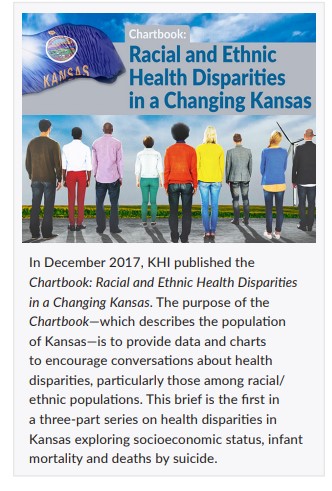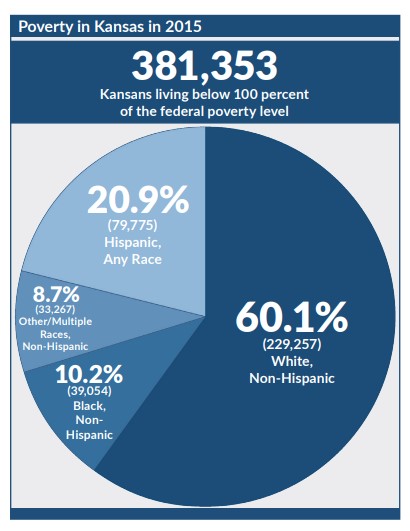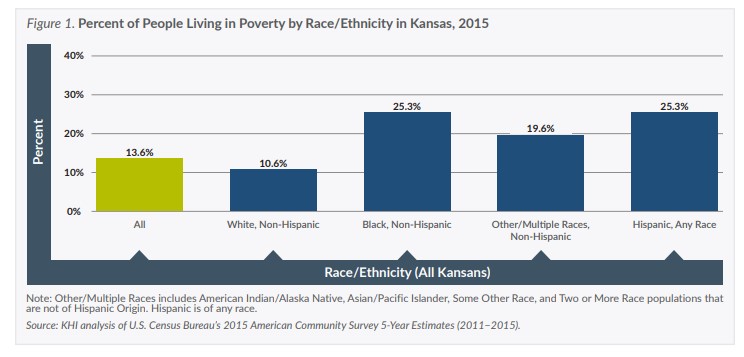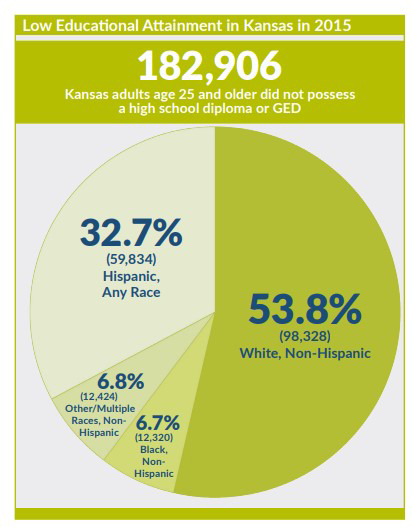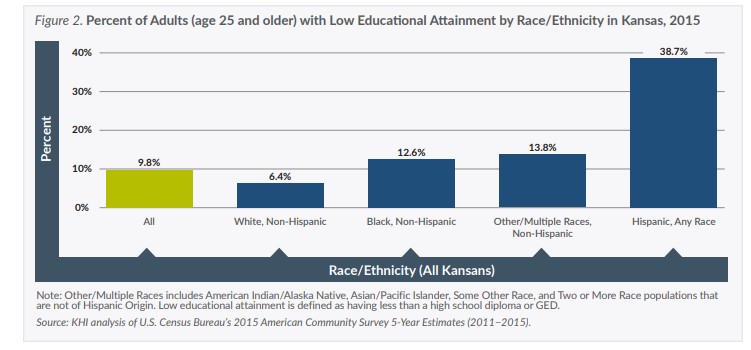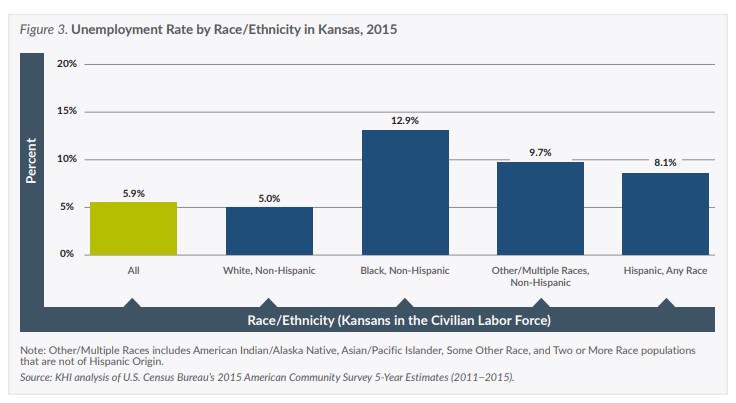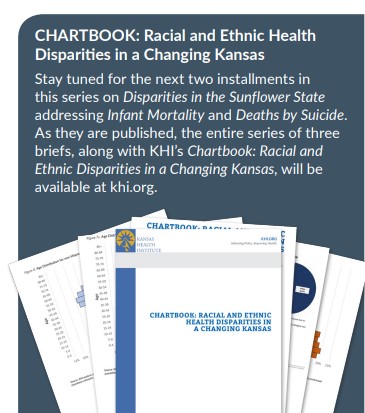Unemployment
An estimated 88,454 Kansans in the civilian labor force (5.9 percent) were unemployed in 2015. As defined by the Bureau of Labor Statistics, the civilian labor force includes those age 16 and older who are not military personnel, federal government employees, retirees, handicapped or discouraged workers, or agricultural workers. Two in three (66.6 percent) unemployed Kansans in 2015 were non-Hispanic Whites, 13.6 percent were Hispanics, Any Race, 11.3 percent were non-Hispanic Blacks and 8.6 percent were non-Hispanic Other/Multiple Race Kansans.
In 2015, non-Hispanic Blacks were more than twice as likely to be unemployed than were non-Hispanic Whites (12.9 and 5.0 percent, respectively). Other racial/ethnic groups also were more likely than non-Hispanic Whites to be unemployed; 9.7 percent of non-Hispanic Other/Multiple Race Kansans were unemployed as were 8.1 percent of Hispanics, Any Race (Figure 3).
While Hispanics, Any Race had a considerably higher rate of low educational attainment in 2015 than did other racial/ethnic groups, they were slightly less likely to be unemployed compared to other Kansas minorities.

